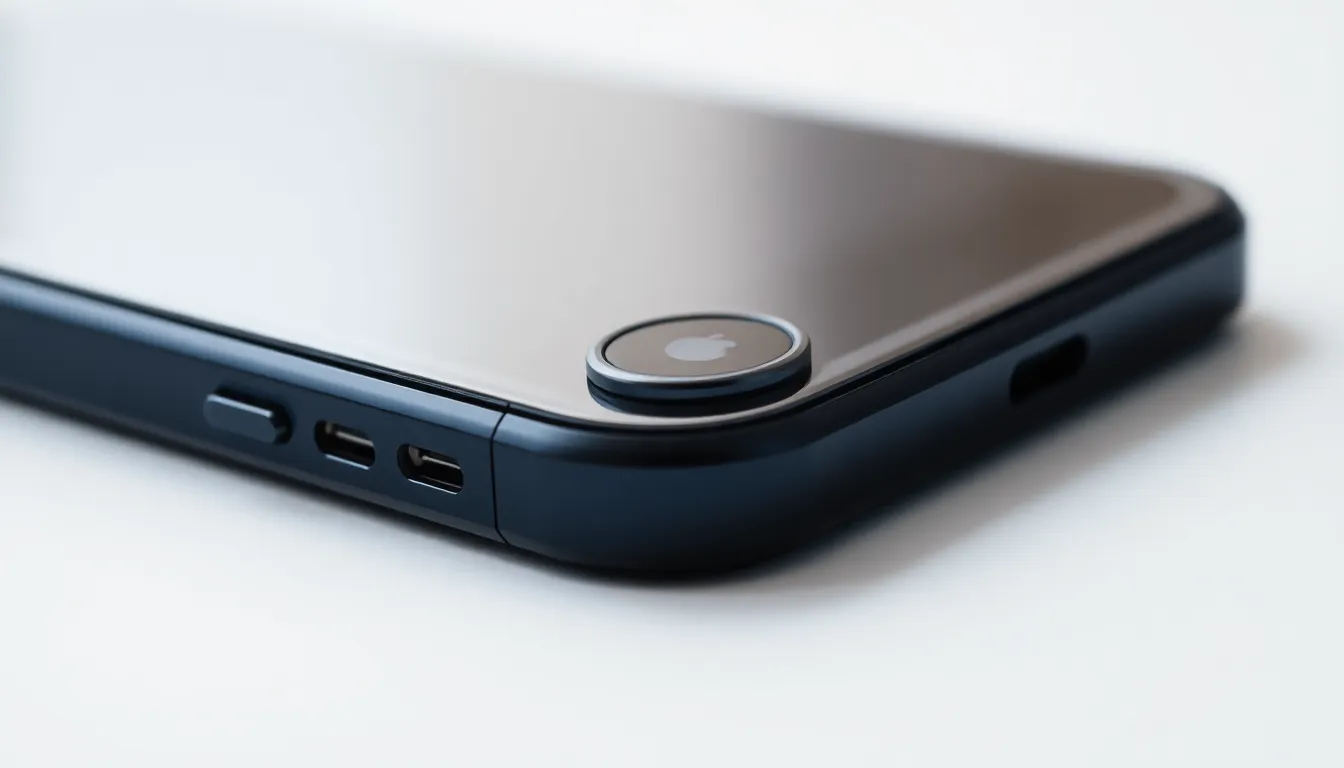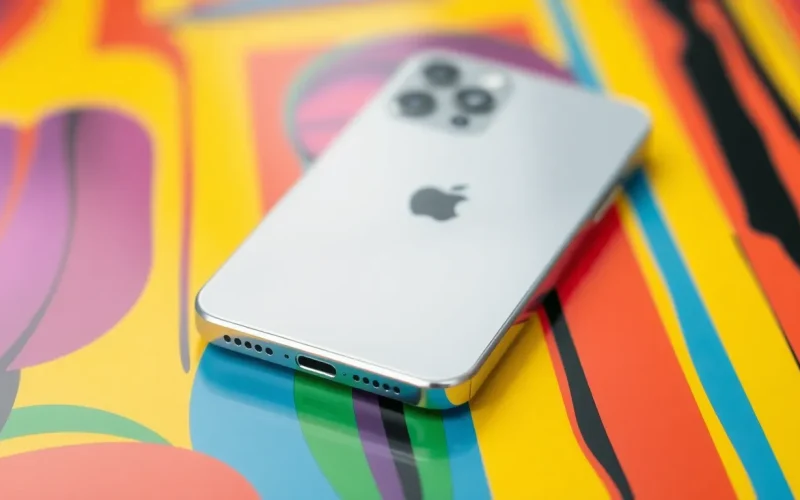Table of Contents
ToggleEver found yourself in a silent standoff with your iPhone, desperately trying to locate its elusive speaker? You’re not alone. Many users have played the game of “Where’s Waldo” with their devices, wondering why their favorite tunes or podcasts seem to vanish into thin air.
Understanding where the iPhone speaker hides can save you from those awkward moments when you’re trying to show off a funny video, only to be met with silence. Whether you’re blasting your playlist or catching up on the latest viral sensation, knowing the speaker’s location can make all the difference. Let’s dive into the world of iPhone acoustics and uncover the secrets behind that tiny yet mighty speaker.
Overview Of iPhone Speakers
iPhone speakers are strategically positioned to enhance audio quality. Typically, one speaker is located on the bottom edge of the device, while another is positioned near the front, alongside the front-facing camera. The bottom speaker provides a primary audio output for calls and media playback, while the front speaker supports stereo sound for a more immersive experience.
Apple’s design prioritizes sound direction, aiming to deliver clear and balanced audio. When placed on a flat surface, sound can resonate more freely, improving audio dynamics. The dual-speaker setup enhances experiences during calls, gaming, and media consumption.
Various iPhone models feature different speaker configurations. For instance, the iPhone 7 introduced stereo speakers, while the iPhone XS and newer versions further refined audio output. These advancements enhance playback, ensuring better sound quality irrespective of the media being consumed.
Understanding the speaker layout aids users in optimizing audio experiences. Users receive notifications and alarms through the bottom speaker, while music playback benefits from the stereo configuration. Knowing the location of speakers minimizes frustration when adjusting settings or positioning the device.
Overall, familiarity with iPhone speaker locations allows users to utilize their devices efficiently, whether for calls or entertainment.
Location Of iPhone Speakers

Identifying the location of iPhone speakers is essential for an enhanced audio experience. The speaker layout significantly affects sound quality during calls, media playback, and notifications.
Front Speaker
The front speaker resides near the front-facing camera. Designed to deliver clear audio, it supports calls and enhances overall sound dynamics. Stereo sound benefits from this dual configuration, creating a more immersive experience when playing music or watching videos. Users can notice a difference in audio output when the device faces them. With this setup, conversations sound more natural during phone calls. This positioning aligns with Apple’s goal of providing quality acoustics.
Bottom Speaker
Located on the bottom edge of the device, the bottom speaker serves as the primary audio output. This speaker handles most media playback, including music and videos. When users play sound, they typically experience rich audio quality thanks to its strategic placement. Notifications and alarms also emit from this speaker, ensuring important alerts are audible. Sound direction maximizes audio dynamics, especially when the device rests on a flat surface. Variations in speaker quality across iPhone models, such as from the iPhone 7 onward, improve the listening experience.
How To Use iPhone Speakers
Using iPhone speakers effectively enhances the audio experience. Play music or videos through the bottom speaker for primary sound output. This speaker, located on the device’s bottom edge, provides clear audio for calls, media playback, and notifications.
Utilize the front speaker, situated near the front-facing camera, for an immersive sound experience. Conversations sound natural when this speaker is used during phone calls. Adjusting the device’s position can improve audio clarity, especially on flat surfaces, where sounds may resonate better.
Increase volume levels through the control center by swiping down from the top right corner of the screen. Adjust the slider to achieve the desired sound. Consider enabling features like Mono Audio when listening through a single speaker, making it easier to hear sounds clearly.
Enhancing audio quality might involve using external accessories. Bluetooth speakers or headphones can significantly improve the listening experience, particularly for music lovers. Look for compatibility to ensure smooth connectivity with iPhone devices.
Engage apps that offer audio enhancements, such as equalizers. These apps allow personalization of sound settings to match user preferences. Testing different apps provides insights into settings that elevate audio quality.
Using Siri may also facilitate audio control. Commands like “Play my favorite playlist” simplify navigation and interactions. Discovering how to leverage voice commands enhances overall usability.
Understanding these aspects creates a more enjoyable experience while using iPhone speakers for various activities. These improved dynamics support better communication and listening needs, fulfilling users’ expectations in audio quality and clarity.
Common Issues With iPhone Speakers
Users often encounter various problems with iPhone speakers that affect audio quality. Low volume can make media playback frustrating, especially in noisy environments. Distorted sound may occur during calls or music playback, disrupting the listening experience. Dust and debris accumulation in speaker grilles also impacts audio performance.
In some instances, sound might not play at all. This situation frequently arises from software glitches or incorrect settings. Checking volume levels in the Control Center can help, but sometimes a device restart resolves unexpected issues.
Moreover, Bluetooth connections can introduce problems. Disconnects or lag may hamper functionality when using external speakers or headphones. Testing the audio interface and ensuring Bluetooth settings are correct often remedies these situations.
Users may experience audio delays when watching videos or playing games. This delay typically results from software processing and can distract from the overall experience. Updating the iPhone to the latest operating system usually improves sync issues.
Settings may also contribute to speaker problems. Accessing the Accessibility menu can reveal options like Mono Audio, which optimizes sound for single speaker use. Adjusting these settings enhances clarity, especially for those with hearing challenges.
Finally, external factors can lead to speaker malfunctions. Water damage can severely affect speaker functionality, so keeping devices away from liquids is crucial. Regular cleaning of the microphone and speaker areas ensures optimal performance and helps prevent future issues.
Knowing the location of iPhone speakers is crucial for maximizing audio performance. With one speaker at the bottom and another near the front, users can enjoy a balanced sound experience for calls and media. Familiarity with these placements not only enhances listening enjoyment but also helps avoid disruptions during important moments.
By taking advantage of tips for effective speaker use and troubleshooting common issues, users can ensure their iPhone delivers clear and dynamic audio. Regular maintenance and awareness of potential problems can further improve sound quality. With this knowledge, users are better equipped to enjoy their devices to the fullest.





